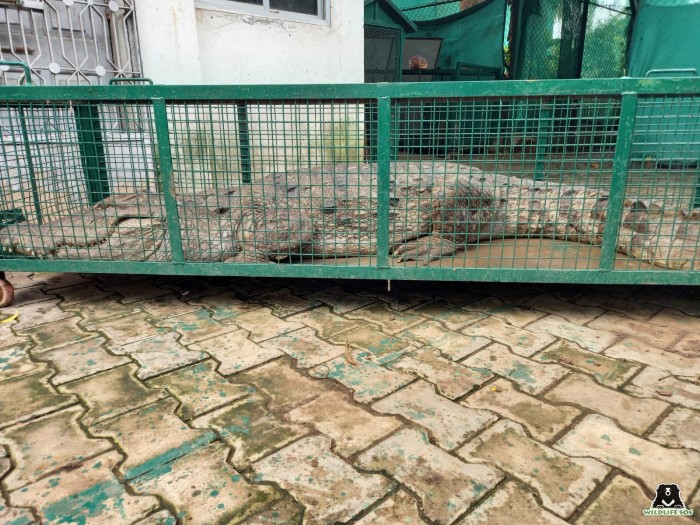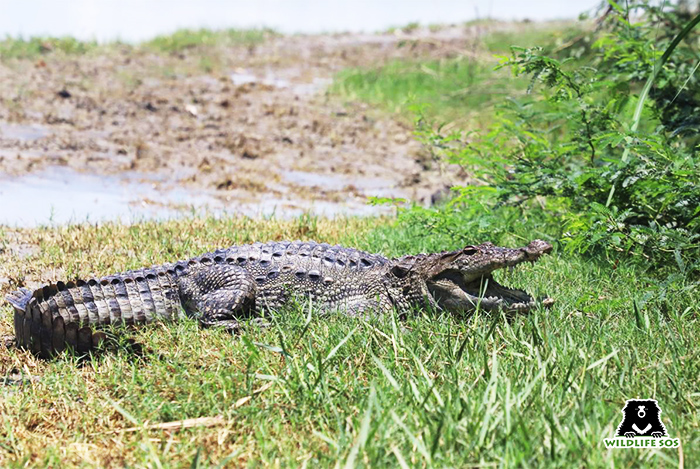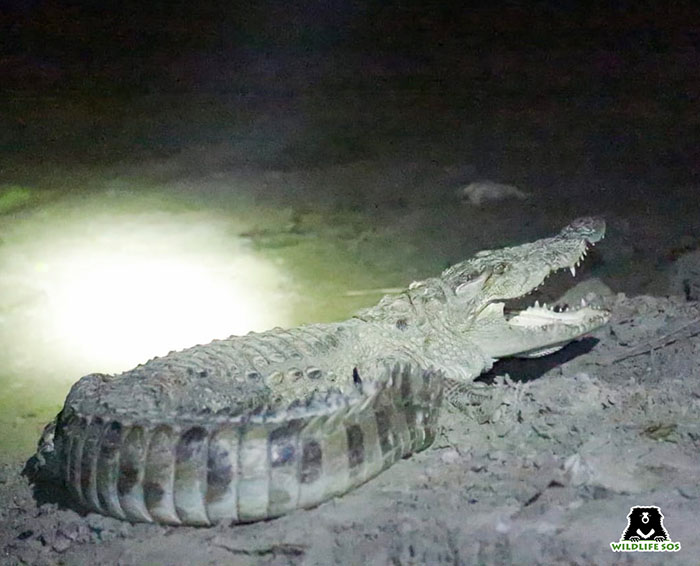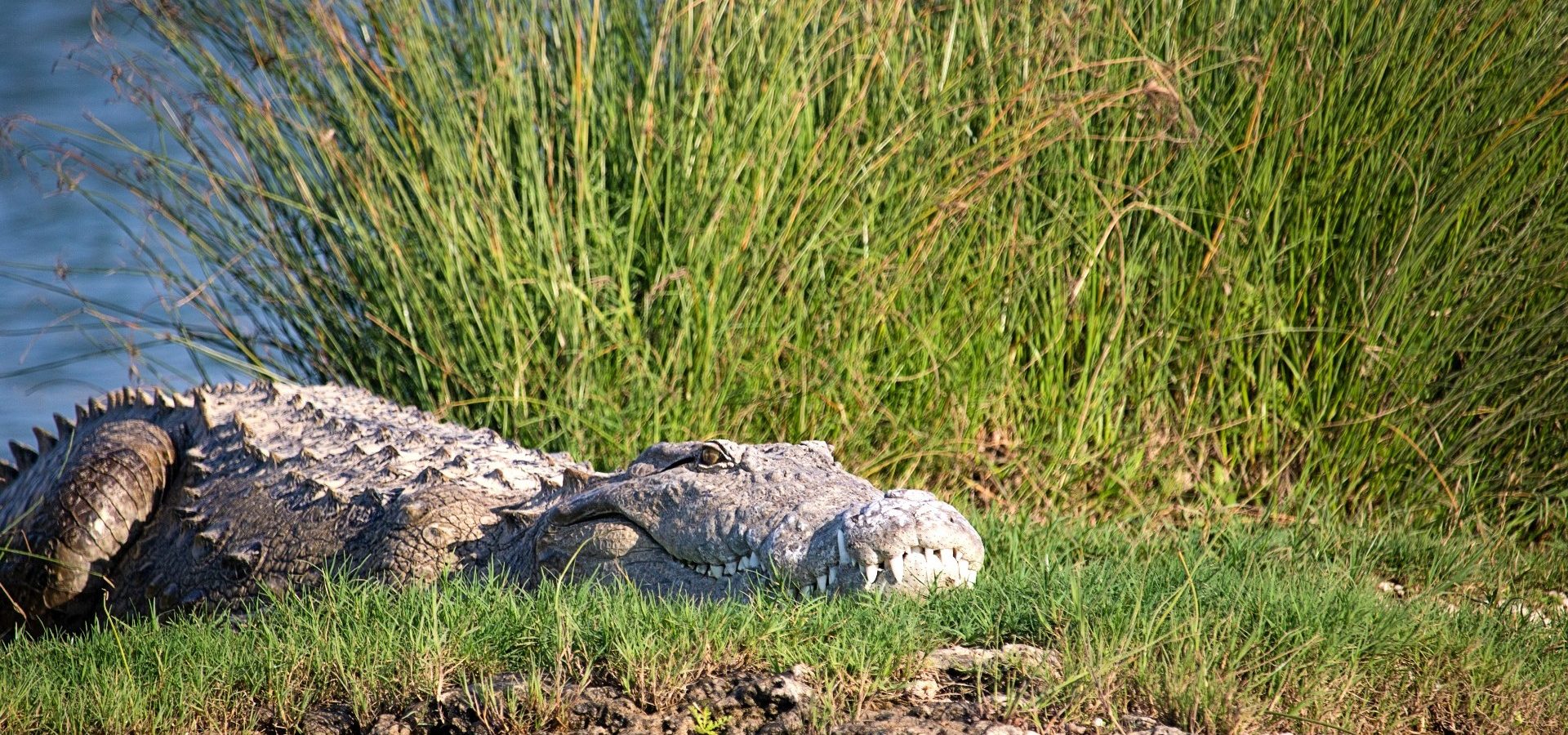Measuring a jaw-dropping 11.5 feet in length, Wildlife SOS rescued its biggest crocodile of the season. The Wildlife SOS Rapid Response Unit, operating in collaboration with the Gujarat Society for Prevention of Cruelty to Animals (GSPCA), rescued the enormous Mugger crocodile from Dumad village situated near Vadodara in the state of Gujarat.
The humongous crocodile was discovered by a local farmer on his agricultural field in Dumad village. Upon spotting the reptile, the farmer immediately informed Wildlife SOS on its 24×7 rescue helpline. After being alerted, a 4-member team was dispatched to attend to the distress call and the team travelled almost 10 km to reach the rescue site.

Geared with the necessary rescue equipment, the team carried out an exhausting 1.5-hour long operation following which the crocodile was safely extricated. The gigantic size, combined with the alertness of the reptile, posed to be the main challenges. Although muggers can reach a maximum length of up to 16 feet, the crocodiles Wildlife SOS has rescued in Vadodara mostly range between 7-8 feet in length.
The rescue team ensured that all precautionary measures were taken so that neither the crocodile nor our rescuers faced any unforeseen predicament. The crocodile was finally lured into a trap cage with bait and handed over to the forest department. Due to the ongoing spell of rain, the agricultural fields in Vadodara and its surrounding villages were inundated with water and had transformed into temporary wetlands. This turned the terrain into a refuge for crocodiles to thrive in.
According to Raj Bhavsar, Project Coordinator, Wildlife SOS and President, GSPCA, the area near Dumad has a high density of crocodiles and they are frequently spotted in this region. This happens due to the heavy rainfall that converts the fields into wetlands. As soon as the water starts receding, the crocodiles can be clearly spotted in the open.
In another tense situation, Wildlife SOS rescued a 5-foot-long Mugger crocodile from a 20 feet deep water tank near a construction site in Khalipur village. The exhaustive rescue operation lasted for three hours, after which the team was able to extricate the reptile to safety.
Gujarat is arguably the largest habitat for Mugger crocodiles in the country and estimates suggest their total population could be around 1,400. Apart from Vishwamitri and Narmada, Mahi and Dhadhar rivers are also home to a lot of muggers, and three out of these four rivers flow through Vadodara city and its surrounding areas. It would not be a hyperbole to term Vadodara as the city of crocodiles since it has one of the highest densities of muggers in the world.

Out of the three rivers, the Vishwamitri is a special one since it is home to over 250 crocodiles. In remote areas, villagers are seen near water bodies when they venture out with their livestock or domestic cattle. In this case, conflict can occur mostly during the crocodiles’ nesting season (post the month of February), when the mother crocodile comes to the river bank to protect her eggs. Such close interactions can inevitably lead to conflict.
In Vadodara, flooding of the Vishwamitri river due to heavy rains during monsoons forces the muggers out of their natural habitat. In the monsoon of 2019, 80 crocodiles were rescued by the Wildlife SOS-GSPCA team after being displaced by flash floods. They were spotted navigating the flooded lanes and even becoming visitors in residential colonies. In 2021, even though the number was not so high, 21 crocodiles were rescued from such situations.

Wildlife SOS works diligently in conducting awareness drives among villagers, along with the Gujarat Forest Department. We have suggested avoidance behaviour by recommending them to not go near the banks during the nesting season. Specific areas have been demarcated using steel meshes where they can perform their daily activities such as washing clothes and tending to their cattle.
We aim to reduce conflict by making people aware about the reasons which force the crocodiles to venture into man-made habitats, and by helping them understand the behaviour of these reptiles. You can support our rescue and awareness efforts by becoming a monthly donor and contribute to saving these reptiles!





